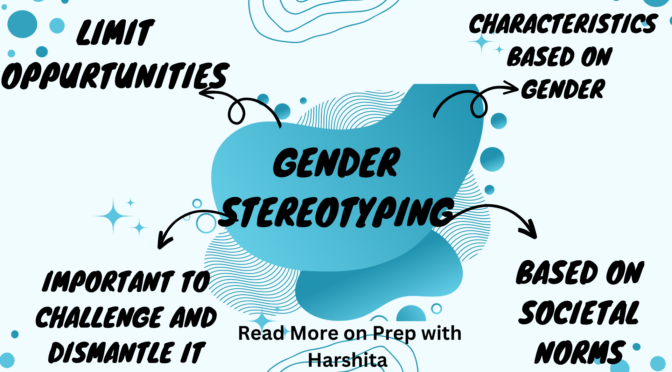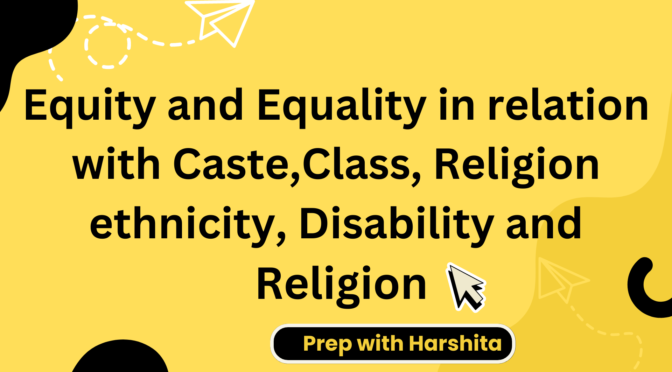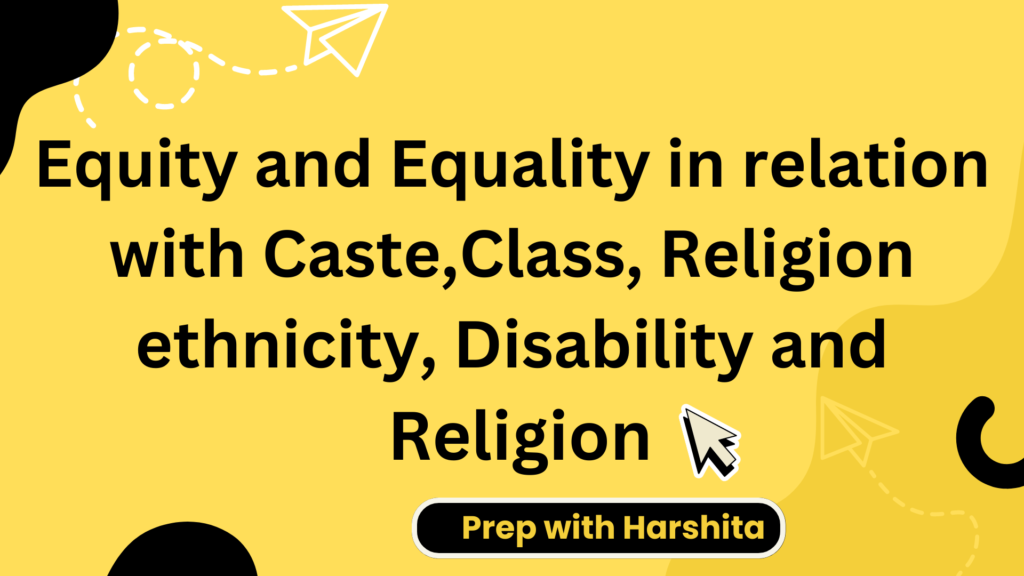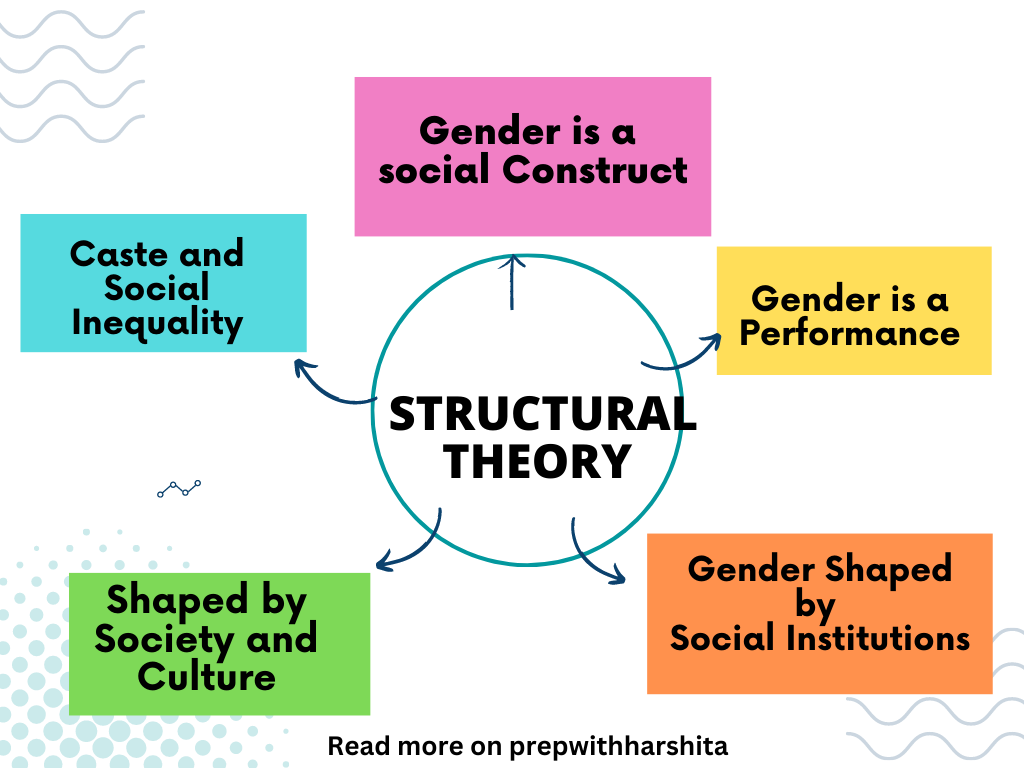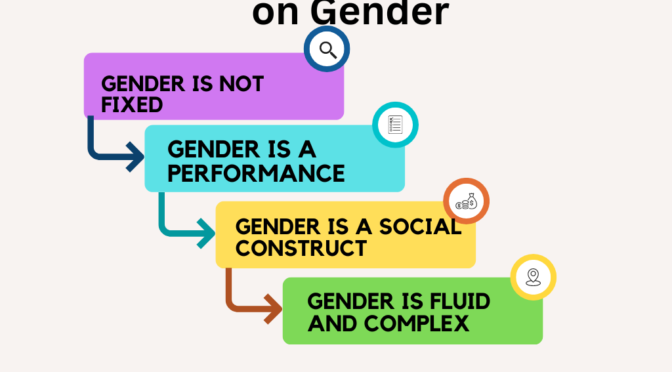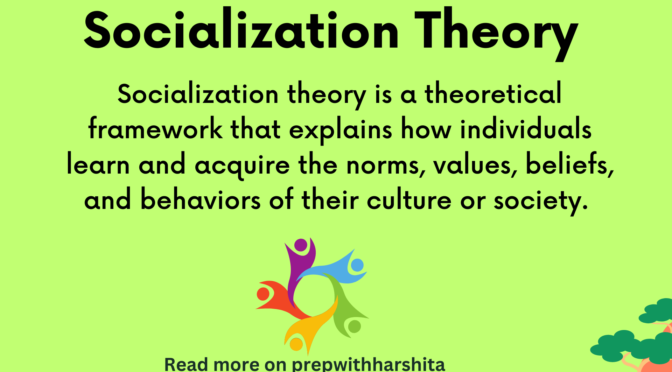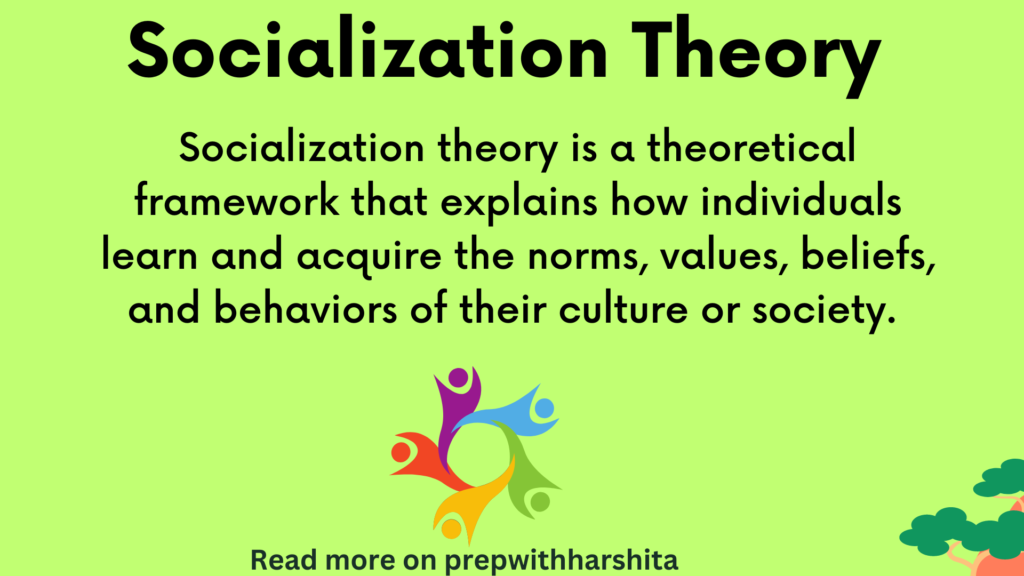Gender stereotyping refers to the assignment of certain characteristics or attributes to individuals based on their gender.
These stereotypes are often based on societal norms and expectations surrounding gender roles and can be reinforced through various mediums, such as media, culture, and education.
Examples of Female Gender Stereotyping:
- Women are expected to be nurturing and caring.
- Women are supposed to be homemakers and take care of children.
- Women should be interested in fashion, beauty, and other traditionally “feminine” things.
- Women are often portrayed as passive and submissive in media and advertising.
Examples of Male Gender Stereotyping :
- Men are expected to be tough and not show emotions.
- Men are supposed to be the primary breadwinners in a household.
- Men should be interested in sports, cars, and other “manly” things.
- Men are often portrayed as aggressive and dominant in media and advertising.
Negative effect of Gender Stereotyping :
- Limits opportunities: Gender stereotyping can limit people’s opportunities . It discourage them from pursuing certain careers or interests that are seen as “not appropriate” for their gender. This can lead to missed opportunities for personal growth, career advancement, and societal progress.
- Reinforces inequality: Gender stereotyping reinforces the idea that certain genders are superior to others and reinforces gender inequality. This can lead to discrimination and unequal treatment based on gender, which can have negative effects on individuals and society.
- Lowers self-esteem: Gender stereotyping can lower the self-esteem of individuals who do not conform to traditional gender roles or expectations. This can lead to feelings of inadequacy, shame, and self-doubt.
- Negatively impacts mental health: Gender stereotyping can contribute to mental health issues, such as depression, anxiety, and stress. This is particularly true for individuals who face discrimination and bias due to their gender identity or expression.
- Hinders relationship building: Gender stereotyping can create barriers to building meaningful relationships between people of different genders. It can lead to misunderstandings, biases, and stereotypes that can hinder communication and connection.
Gender Stereotypes in India:
- Women are supposed to be homemakers: In India, there is a strong expectation that women should be responsible for managing the household and taking care of the family. This can limit women’s opportunities for education and career advancement, as well as perpetuate the idea that women’s primary role is to be a caregiver.
- Men are supposed to be breadwinners: Similarly, there is an expectation that men should be the primary breadwinners in the family. This can put pressure on men to provide for their families, often at the expense of their own well-being and personal fulfillment.
- Women are supposed to be modest: There is a belief in Indian culture that women should be modest and not draw attention to themselves. This can lead to victim-blaming in cases of sexual harassment or assault, as women are often blamed for “provoking” the attacker by their clothing or behavior.
- Women are supposed to be submissive: In Indian culture, women are often expected to be submissive and deferential to men. This can lead to power imbalances in relationships and perpetuate gender-based violence.
- Men are supposed to be strong and dominant: Men are often expected to be strong and dominant, and to display their masculinity through physical strength and aggression. This can lead to toxic masculinity and violence against women.
It is important to challenge and dismantle gender stereotypes to promote gender equality and create a more inclusive society where individuals are not limited by their gender.
This can involve creating policies and practices that support work-life balance for all genders, promoting diverse representations of gender roles in media and education, and encouraging individuals to challenge their own assumptions and biases about gender.
Also Read : Gender and Patriarchy
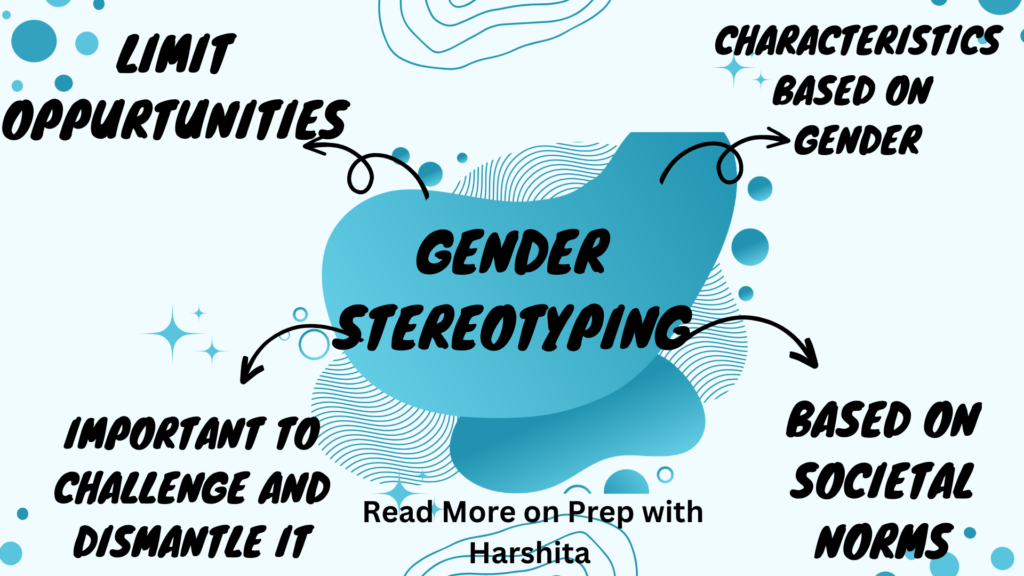
Also Visit : Prep with Harshita

